
The chants started in early 2002. "God is great! Death to America! Death to Israel! Curses upon the Jews! Victory for Islam!"
Thirteen years ago they were just a few men, disaffected students and farmers, shouting outside a rural mosque in the north Yemeni highlands. Today, they are in charge. They're known popularly as the Huthis; the U.S. believes they are an Iranian proxy and Saudi Arabia has already fought one war with them.
On Friday the group, which now has at least several thousand supporters, dissolved Yemen's parliament and installed themselves as the country's new rulers. (They had already forced the president, prime minister, and cabinet to resign en masse two weeks ago.) A spokesman at the presidential palace, which is under Huthi control, said the group would form a five-member presidential council to rule the country for the next two years, and that the " supreme revolutionary council" would soon name a new 551-seat National Transition Council in accordance with today's constitutional decree.
The same group that has waged six brutal wars against the Yemeni state over the past decade is now the state.
This is the story of how the Huthis came to be, why the group was able to prosper as the rest of the country collapsed, and what that now means for Yemen, the region, and the U.S. campaign against al-Qaeda in the Arabian Peninsula, the organization's most sophisticated and dangerous branch.
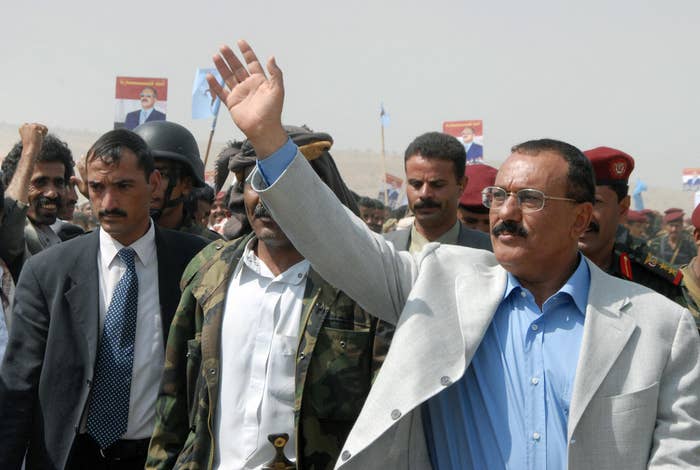
It all goes back to a budget cut.
In 2000, Yemen's then-President Ali Abdullah Salih made one of his periodic changes to a discretionary fund that was known within his office as al-i'timad, or support. Salih used the money as a governing tool — when one rival got too strong, Salih would funnel money toward opponents as a way of keeping them in check without confronting them directly. It was part of what he called "dancing on the heads of snakes," staying ahead of his enemies by playing them off against one another. The process was crude and prone to fluctuation, but for years it worked. The strategy allowed Salih, who came to power on the heels of the brutal assassinations of his two immediate predecessors, to survive and, for awhile, even prosper.
In the mid-1990s, an Islamist political grouping called Islah, which included the local chapter of the Muslim Brotherhood as well as tribal elements, had started to grow in power, taking control of a handful of key ministries. Salih, who had been funding the group off and on for years, withdrew his support and started funding their domestic enemies.
One of the beneficiaries of that shift was a member of parliament named Husayn al-Huthi, who came from a religious family that traced its roots back to the Prophet Muhammad and for years had been like local royalty. Studious and momentarily tired of politics, Huthi, 41, decided not to stand for re-election in 1997. Instead, he used Salih's money to study for a master's degree in Sudan. Three years later, in 2000, the political winds shifted again. Islah had been weakened, and Salih took Huthi off the payroll. With no stipend, Huthi had little choice. He withdrew from his program in Sudan and returned home.
Two years later, the chants started: "God is great! Death to America! Death to Israel! Curses upon the Jews! Victory for Islam!"
On the day they started, in January 2002, Husayn al-Huthi stood in front of a group of supporters dressed in a long white robe offset by a dark sports jacket. Stocky and dark with a full beard and soft eyes, he had a commanding presence. Our community is under attack, he told his audience. Soon we will be no more.
The men in the square knew what he was talking about. For centuries families like the Huthis had supplied the imams who had ruled northern Yemen for more than 1,000 years. They were Zaydis, a Shiite offshoot that took their name from Muhammad's great-great grandson Zayd bin Ali. Adopting the flexibility of marginalized groups, Zaydis charted a sort of middle course between Sunni and Shia — they were fivers, both the unofficial fifth school of Sunni Islam and followers of the fifth imam in Shiite Islam. Through the centuries in Yemen they were almost indistinguishable from their lowland Sunni neighbors, save for the fact that Zaydis had an extra line in their call to prayer and held their hands differently. The two groups intermarried and prayed in each other's mosques. But a revolution in 1962 overthrew all that and abolished the Zaydi state. Instead of an imam, Yemen had a president and the ruling class of families like the Huthis suddenly found themselves powerless.
In early 2003, a year after the initial protests broke out, Salih passed through the region on his way to Saudi Arabia. Stopping for prayers, Huthi's men greeted him with more of their chants. Their chants saw them use popular frustration to both win local support and to implicitly criticize Salih. Muslims worldwide, they believed, were under attack from the U.S. and Israel, just as Zaydis in Yemen — the true Muslims — were under attack from Salih and his government. The Zaydi demonstrators denied this with wide-eyed innocence, claiming they were seeking only to "defend Islam." But what they were doing was obvious to everyone in Yemen, including Salih.
Huthi's eloquent, deeply religious speeches had tapped into a current of discontent in Yemen. A massively corrupt government, rising food prices, and high unemployment pushed people to action, and not just in their home region. Every Friday after prayers, Zaydi activists, inspired by Huthi and his followers, chanted outside the Great Mosque in Sanaa. Tucked deep inside the old city, Sanaa's oldest mosque, built by a companion of the prophet, was now a symbol of the resistance. And the movement was spreading fast. Throughout the mountain towns of north Yemen, men were repeating the chants.
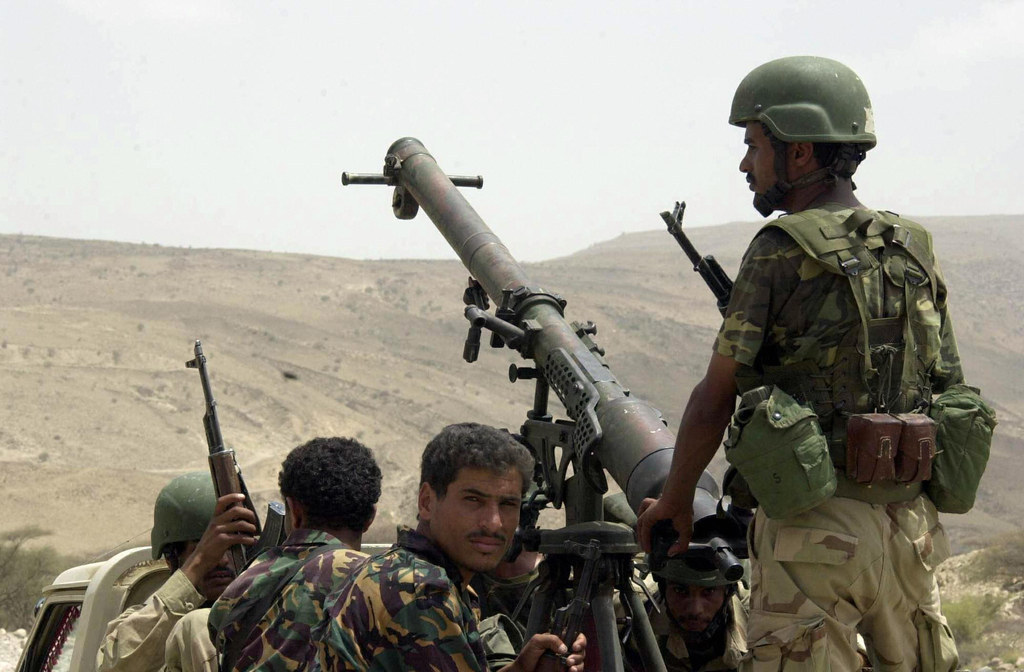
Things came to a head shortly after noon on Friday, June 18, 2004, as dozens of men streamed out of the wide wooden doors of the Great Mosque. Within minutes, the narrow stone alleyways of the old city echoed with the now familiar chants. But this time Salih's men were ready. Plainclothes security officers and dozens of uniformed police beat back the protesters with clubs and sticks as they made several arrests.
About 150 miles to the north in Sadah's mud-brick old city, al-Huthi's followers were involved in a separate skirmish. Taking over a state mosque, they expelled the preacher who was on the government's payroll and pushed the caretaker into the street. After today, they proclaimed over the mosque's loudspeakers, there will be no more government lies emanating from this location.
Salih had seen enough. Two days later, on June 20, a detachment of soldiers tried to approach Huthi's farm. Huthi fighters turned them back, and the war was underway.
One week later, with the phone lines to his farm cut, Huthi sat down to write the president a letter. He was confused. Why was Salih so upset with him? "I'm certain that I have done nothing that would lead to such a feeling. I do not work against you," he scrawled in cramped, slanting lines. "I'm by your side, so don't listen to the hypocrites and provocateurs and trust that I am more sincere and honest with you than they are." Huthi concluded the one-page letter optimistically. He still believed that the two men could work out their differences. "When we meet, if God is willing, I will talk to you about matters that are of great concern to you."
He would never get the chance. High above the arid mountains, military jets from Sanaa flew bombing raids against suspected Huthi positions. The government estimated that Huthi had 3,000 supporters out of a population of 700,000 scattered across farms and homesteads in an area roughly the size of New Jersey. But simple arithmetic was misleading. North Yemen's rugged geography, with peaks as high as a mile and a half above sea level, acted like a force multiplier, while deep, roomy caves provided shelter from heavy aerial bombardment. Government officials described the region as "Yemen's Tora Bora."
Indiscriminate shelling compounded the problem. Air force bombs plowed into farmers' fields, destroying a year's worth of planting and investment and driving entire families into debt. Off the farms, security forces who had been hunting al-Qaeda, which had gained a foothold in the country, moved north to fight the Huthis. They arrested people en masse and seized their property. The fighters' elderly fathers, younger sisters, and cousins were arrested in house searches across the region. Zaydis, like suspected jihadis, were guilty until proven innocent. The government controlled the urban areas, but in order to defeat the Huthis it had to pacify the countryside. Working from village to village proved messy, slow, and corrosive. The army's collective reprisals pushed hundreds of neutral tribesmen into Huthi's camp.
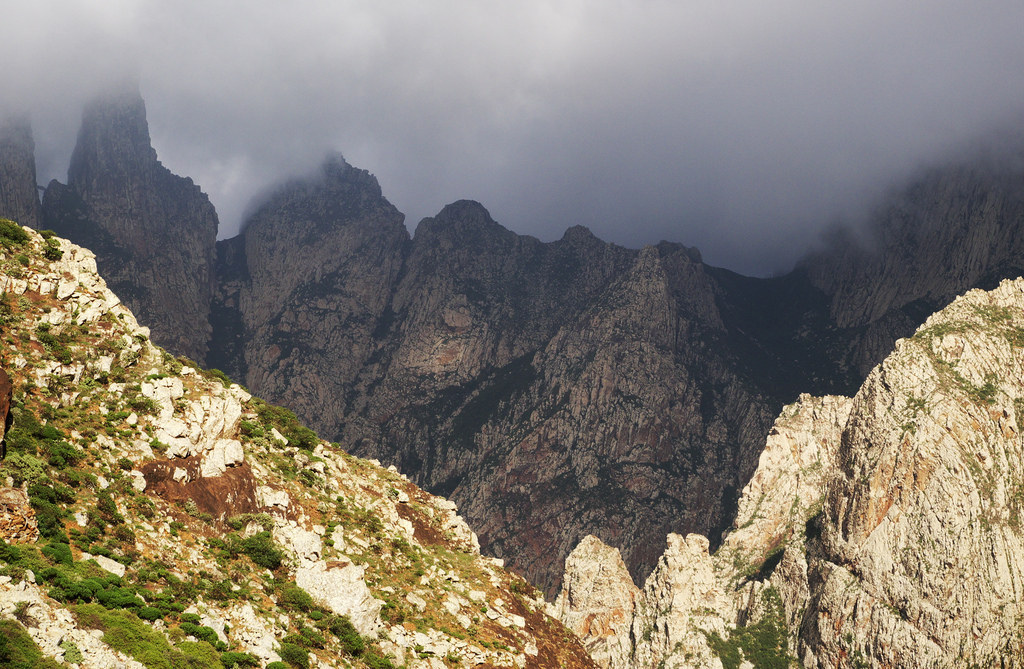
By late summer 2004, Salih's generals believed they were on the verge of victory. But the rebels were defending the same mountains they had played in as children. During the day, government forces, backed by tribal militias, fought their way forward only to be forced back at night. Natural guerilla fighters, the Huthis had a hit-and-run style of assault that took a toll on Yemen's cumbersome military of tanks and heavy machinery.
Yemen's air force pilots were working without much in the way of actionable intelligence. All they could do was drop bombs and hope some of them hit the right targets. Amazingly, in the jagged mountains and miles of broken territory, one of them did. A lucky strike hit the cave where al-Huthi was hiding and destroyed the intricate water system he had built. Trapped inside by the roaming bands of soldiers and tribesmen who were combing the mountains, inspired by a $55,000 reward, Huthi and his family waited.
On Sept. 10, three days after the water ran out, Huthi sent two of his wives, one of whom was nursing a small child, out of the cave and into the daylight. Dressed in rags and covered in dirt after days in the dark, the women looked like refugees. Government soldiers quickly located the women and ordered Huthi to come out with his hands up. "I want to talk to the president," he shouted back. "I will only surrender to him."
It was the only demand he'd made since the fighting began and it was still a nonstarter. Slowly, the beaten man shuffled toward the cave's entrance. As he passed into the light, one of the soldiers thought he saw him reach for his pocket. Opening fire, the soldiers hit him several times in the chest. Huthi died minutes later, unable to utter another word, according to soldiers at the scene.
One of the soldiers later said that they had no idea what Huthi was thinking: "We don't know if Huthi was going to attack or if he wanted to surrender." Searching the body, the soldiers found a pistol stuffed in his pocket.
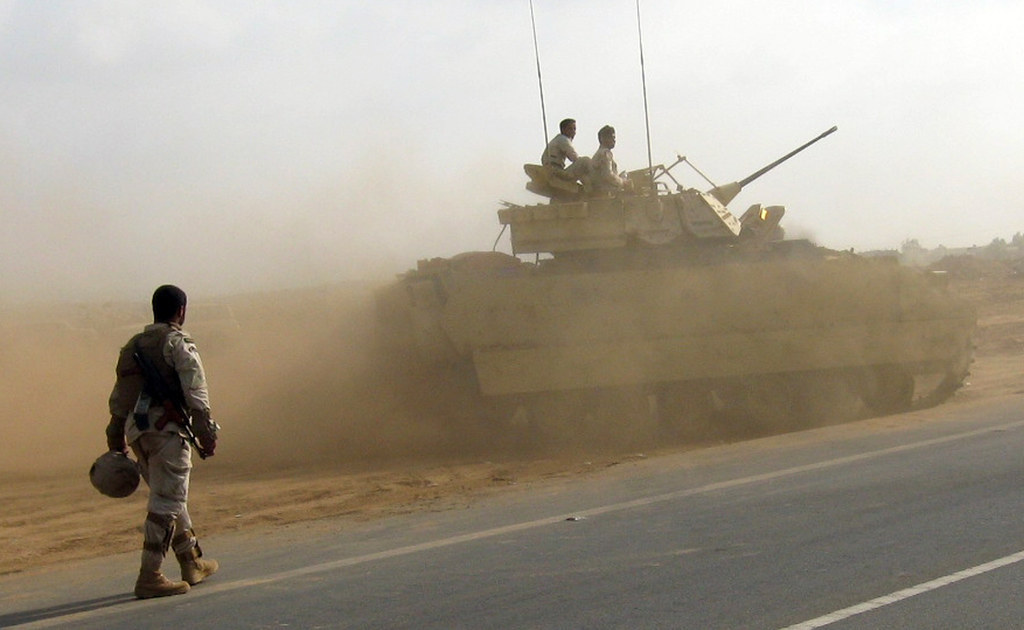
Huthi's death was supposed to end the movement. It didn't. Leadership passed to his father, Badr al-Din al-Huthi, a frail-looking 78-year-old cleric with an unruly white beard. In January 2005, he traveled to Sanaa with his wives and most of his family to negotiate for his son's body, which he wanted to bury. Scholarly and short-tempered, Badr al-Din was hardly the best choice for a negotiator. The days stretched into weeks and still the meeting with Salih never materialized, as tempers grew short in the Huthis' temporary and overcrowded apartment. The Huthi women, who were often divided by domestic jealousies, complained of getting wet when it rained and muttered that living under a riverbank would be better. The tiny apartment was a far cry from the castle-like homes they were used to in Sadah.
But the family was stuck. Fearful of government reprisals and unsure of what was acceptable to Salih, no one in Sanaa would rent to them. When Salih heard about Badr al-Din's difficult living situation, he sensed an opportunity. Offer him a house in Sanaa, he ordered an aide, something big enough to accommodate all his women.
But Badr al-Din didn't want a house. He wanted a meeting with the president and the return of his son's body.
Like his son before him, Badr al-Din never got his meeting. In a rare interview with a Sanaa-based newspaper in March 2005, he said, "I have not met with him." The interview was his final overture, but even before it was published he left Sanaa to return home. He knew what was coming. On March 19, 2005, the same day that Badr al-Din's interview was published, the second Huthi war began.
Four more wars would follow over the next five years, each as bloody and brutal as the last. In November 2009, the fighting spilled over the border into Saudi Arabia. The Saudis performed as poorly as the Yemeni military, and by February 2010 the Huthis had effective control over much of the territory in Sadah.
Salih fell the next year as part of the Arab Spring, but unlike many of his counterparts he was able to forge a deal that saw him stand down in exchange for immunity. Amid the uncertainty of the political situation in Sanaa, the Huthis established themselves as a de facto state in the north Yemeni highlands. The U.S. and United Nations, which helped to structure the transition deal, seemed to believe that the Huthis would voluntarily give up power in order to be part of the new Yemeni state. That assumption, it turns out, was wrong.
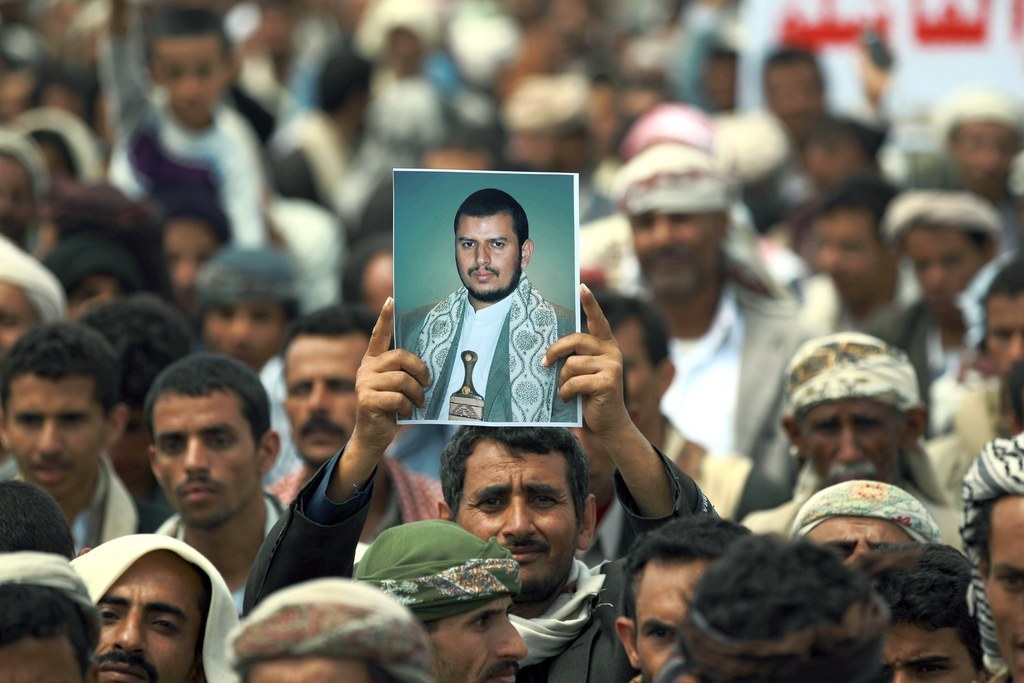
Late last year, under the leadership of Abd al-Malik al-Huthi, the 33-year-old commander who has taken control of the movement after the deaths of his brother and father, the group pushed into Sanaa looking to settle old scores. Abd al-Malik's men fought their way into military camps and forcibly expelled several military and tribal leaders who had been responsible for much of the fighting over the previous decade. Once those rivals were removed, there was little to stop the Huthis. In Yemen's struggle, they had the most guys with guns. All that was left was for them to consolidate their gains.
Last month, Huthi fighters kidnapped the president's chief of staff, apparently in an attempt to use him as a human bargaining chip in the debate over a new constitution. A few days later, on Jan. 22, with many of their homes surrounded, Yemen's prime minister and cabinet submitted their resignations. Isolated and alone, Yemen's president had little choice but to follow suit.
Looming over the whole process is former President Salih, who is still in Sanaa and appears to be up to his old tricks of making common cause with his former enemies. In November, the U.N. sanctioned Salih and two Huthi commanders for "undermining" Yemen's new government. Many in Yemen fear that Salih is once again making a temporary alliance with the Huthis as a way plotting a comeback along the lines of the old guard in Egypt.
At the moment Yemen has no president, vice president, prime minister, cabinet, or parliament. The Huthis have made their announcement and they are — at least for the moment — the strongest individual group, but even they don't have enough men to force the rest of the country to acquiesce to their rule. And the more power they attempt to seize, the more resistance they will encounter. Already tribes in Marib — hours east of the capital — are threatening to cut off electricity and gas to the capital and fight the Huthis. Other regions are making similar gestures, and many worry that the south of Yemen —- long dissatisfied with northern rule — will take this opportunity to secede.
Another beneficiary of the Huthis' rise to power is, ironically, Yemen's al-Qaeda branch. The natural enemies of the Huthis, AQAP will likely attract more recruits as fighters look for a force to counter the rebels. And it is exactly this scenario that worries U.S. officials: a collapsing Yemen, a growing al-Qaeda, and no allies on the ground.
The Yemen model that President Obama praised only a few months ago has collapsed. The state has fractured and no one is sure if it can be put back together again. A decade ago the Huthis were at war with the state and looked to be on the verge of extinction, today they're in the presidential palace.
Parts of this piece were adapted from The Last Refuge: Yemen, al-Qaeda and America's War in Arabia.
